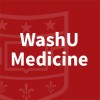
Prevention of Postpartum Haemorrhage With Sublingual Misoprostol or Oxytocin
Postpartum HemorrhageSublingual misoprostol produces rapid peak concentration and is more effective than oral misoprostol for prevention of excessive postpartum bleeding. The study hypothesis was to test whether women receiving sublingual misoprostol for prevention of postpartum hemorrhage have 30 ml less average blood loss than women receiving oxytocin, the standard of care for prevention of postpartum hemorrhage. We conducted a Double blind randomized controlled trial of .652 consenting, eligible pregnant women admitted to the labor room of the teaching hospital at J N Medical College, Belgaum, India. Women participating in the study were assigned by computer generated randomization to receive the study medications and placebos within one minute after clamping and cutting the umbilical cord. We also looked at the drugs effects on postpartum blood loss at or above ≥500 ml (considered hemorrhage), and the percent of women experiencing more than a 10% decline in haemoglobin, and reported drug side effects.

The Effectiveness of Video-capsule Endoscopy in Gastrointestinal Bleeding of Obscure Origin
Gastrointestinal BleedingThe study objective is to compare the cost-effectiveness of VCE to push enteroscopy in patients with gastrointestinal bleeding of obscure origin with a negative initial work-up.

Systematic Screening for Risk-factors for Ulcer Bleeding Before Anti-thrombotic Treatment
Coronary Occlusion/ThrombosisPeptic Ulcer HemorrhageIn a prospective randomised study design to investigate, if a systematic risk factor screening for bleeding ulcer in patients, who following percutaneous coronary intervention (PCI) commence a one year combination treatment with low dose aspirin and clopidogrel, followed by prophylactic treatment with a proton pump inhibitor (PPI) in case of increased risk, can reduce the risk of bleeding ulcer. Based on the recently raised suspicion that PPI's, possibly except pantoprazole, reduce the effect of ADP-receptor inhibitors, pantoprazole has been chosen as prophylaxis in the screening group, and analyses will be done to ascertain whether PPI treatment increases the risk of coronary events. Further analyses will be made to see whether PPI prophylaxis in high risk patients can increase compliance with the antithrombotic treatment through a reduction of side effects, thereby reducing the risk of myocardial infarction in particular stent thrombosis. The study population will be analyzed further to identify the patients, who will benefit the most from PPI prophylaxis Hypothesis: screening heart patients for risk factors for bleeding ulcer and subsequently treating high risk patients with PPI can reduce the incidence of bleeding ulcer and increase compliance with the antithrombotic treatment; thereby possibly reducing the risk of coronary events and improving survival. Initial a description of the prevalence of risk factors will be done.

High-dose Simvastatin for Aneurysmal Subarachnoid Haemorrhage
Subarachnoid HemorrhageExperimental evidences supported the benefit of Simvastatin in subarachnoid haemorrhage. Moreover, Simvastatin is a potent agent in achieving low-density lipoprotein (LDL) reduction with a proven safety profile. However, there is no clinical data to compare the efficacy of different dosage regimens (namely whether high-dose regimen is better) and related cost-effectiveness analysis, although biochemical actions and related neuroprotective mechanisms were thought to be dosage-related. This gap in knowledge is important, on how to implement the use of statin and interpret different trial results. With these in mind, the investigators designed the current study. Hypothesis: Daily Simvastatin 80mg (high dose) treatment given within 96 hours of the ictus over three weeks will reduce incidence and duration of delayed ischemic deficits following subarachnoid haemorrhage when compared to daily Simvastatin 40mg (normal dose) treatment, leading to improvement in clinical outcome, which translates into advantage in terms of cost-effectiveness.

A Study to Prevent Rebleeding After Initial Successful Primary Endoscopic Haemostasis of a Bleeding...
Gastrointestinal HemorrhageThis study is being carried out to see if constant 3 days infusion of Nexium is effective in preventing rebleeding after an endoscopic treatment.

A Pilot and Feasibility Study to Evaluate Capsule Endoscopy
Upper Gastrointestinal HemorrhageThis study is aimed at assessing the capability of the PillCam Platform using the PillCam ESO 2 Capsule in: Determining whether there is 1) active bleeding in the Upper gastrointestinal (UGI) tract, 2) identifying the anatomic location of acute overt UGI bleeding, and 3) discriminating a variceal versus non-variceal source of UGI bleeding.

Fibrinogen and Bleeding After Cardiac Surgery
ComplicationsBleeding1 moreThe study hypothesis is that prophylactic fibrinogen infusion reduces postoperative bleeding and transfusion requirements after coronary artery bypass surgery (CABG) in patients with endogenous fibrinogen levels in the lower normal range. 60 patients will be included in a prospective, randomized double-blind placebo-controlled single center study.

A Randomized Controlled Trial of Oral Naproxen and Transdermal Estradiol for Bleeding in LNG-IUC...
ContraceptionBleedingWe hypothesize that the addition of oral naproxen or transdermal estradiol will decrease the number of days of unscheduled bleeding experienced by first-time users of the levonorgestrel intrauterine system (LNG-IUC) during the first 12 weeks of use compared to an oral placebo. The objective of this study is to compare the total number of days of bleeding experienced by first time users of the LNG-IUC randomized to oral naproxen or estradiol patch compared to those randomized to placebo for the first 12 weeks of use. We will enroll women initiating LNG-IUC to one of 3 groups, transdermal estrogen, oral naproxen or oral placebo. We will enroll a total of 114 women, 38 in each group. Women will keep bleeding diaries for 16 weeks which will be used to calculate the total number of bleeding or spotting days. Statistical analysis will be performed to evaluate if there is less bleeding among the treatment arms then the placebo arm.

A Trial of Ligation Plus Nadolol Versus Nadolol Alone in the Prophylaxis of First Variceal Bleeding...
Variceal BleedingCirrhosisThe value of banding ligation plus beta blocker in the prophylaxis of first episodes of variceal bleeding has not yet been evaluated. This study was conducted to compare the efficacy and safety of banding ligation plus nadolol versus nadolol in the prophylaxis of first bleeding in cirrhotic patients with high-risk esophageal varices.

Does Erythropoietin Improve Outcome in Very Preterm Infants?
Intracranial HemorrhagePeriventricular Leukomalacia2 moreThe main goal of this trial is to investigate whether early administration of human erythropoietin (EPO) in very preterm infants improves neurodevelopmental outcome at 24 months corrected age. This study is designed as randomized, double-masked, placebo controlled multicenter study involving at least 420 patients.
